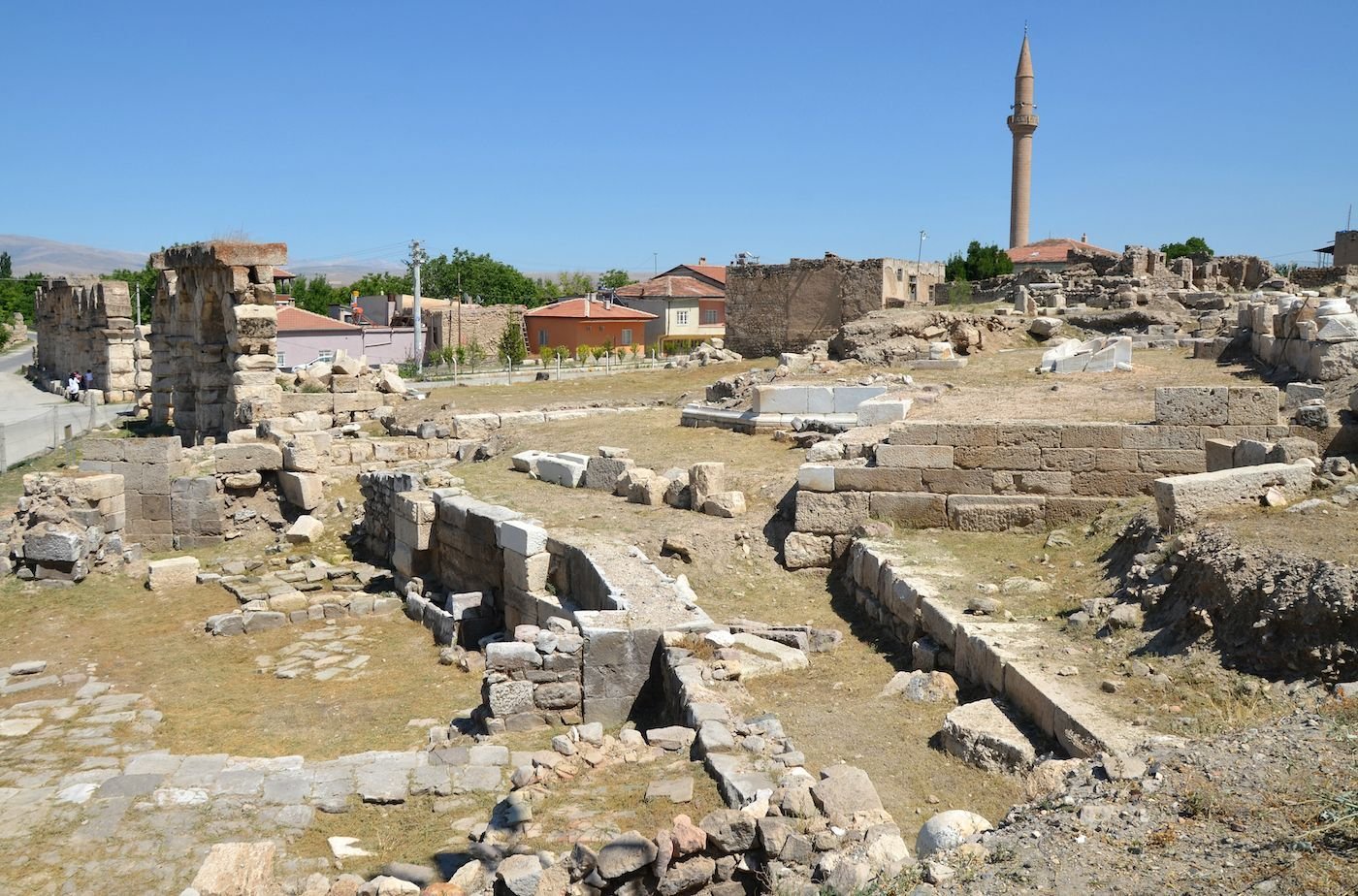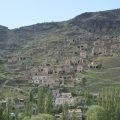Tyana is an ancient city located in southern Cappadocia, in the modern village of Kemerhisar, Niğde. It was a vital Cappadocian city in Greco-Roman times, second in importance only to the capital Caesarea (Kayseri), due to its location on a strategic trade route. Today, Tyana is known for its long, arched Roman aqueduct that still stands, but it is not a popular tourist destination and few visitors explore the impressive ruins.
To get to Tyana, you can take a bus or drive from the nearby cities of Niğde or Kayseri. The journey takes about an hour by car and slightly longer by bus. If you’re traveling from Istanbul, you can take a domestic flight to either Kayseri or Nevşehir and then hire a car or take a bus to Tyana.
Upon arriving at Tyana, you will see the impressive ruins of the city, including the famous Roman aqueduct that brought water from the Roman pool 4 km away. The spring flows into the large Roman pool (23m by 66m) that lies at the base of the Neolithic mound Köşk Höyük. The pool and aqueduct were built around 200 AD, the peak of the Roman empire, and water was transported via subterranean clay pipes for 2.5 km, and then along the aqueduct for the final 1.5 km before the city center.

Apart from the aqueduct, there are several other historical sites in Tyana. The city first appears in Hittite sources around 1600 BC as Tuwanuwa, an important trade town and independent city. Around 800 BC, Tuwanuwa became the capital of the Neo-Hittite Kingdom based in southern Cappadocia at Köşk Höyük. Around 400 BC, the Persians mention Dana as a great and prosperous city. In 330, Alexander the Great passed through Tyana just before his army marched through the Cilician Gates to confront the Persian empire. During the Hellenistic period, the city was known as Tyana (and, sometimes, Eusebia of Tarsus).
In the 1st century AD, the famous Apollonius (of Tyana) was born and raised in Tyana. He became famous among Roman leaders because he predicted that Vespasian would become emperor. Apollonius was remembered as a famous miracle-worker, philosopher, and teacher. For this reason, modern historians have compared his life to that of Jesus Christ in the Gospels. In later centuries, as paganism declined in the Roman Empire, pagan apologists upheld Apollonius as a hero.
The church in Tyana also has a significant history. The first reported bishop, Eutychus, attended the Nicaean Council (325). The last metropolitan was named in 1359, just before the Ottoman empire overtook the Byzantine empire. The foundations of a Byzantine church have been excavated in Tyana.
The city was destroyed several times during the Arab raids of the 8th and 9th centuries. It was then overtaken by Seljuk and then Ottoman Turks.
If you’re interested in exploring the ancient ruins of Tyana, be sure to wear comfortable walking shoes and bring plenty of water. The archeological excavations are not accessible to the public, but you can walk along the arched aqueduct and explore the city ruins. Overall, Tyana is a fascinating historical site that offers a glimpse into the rich history of Cappadocia, and is well worth a




